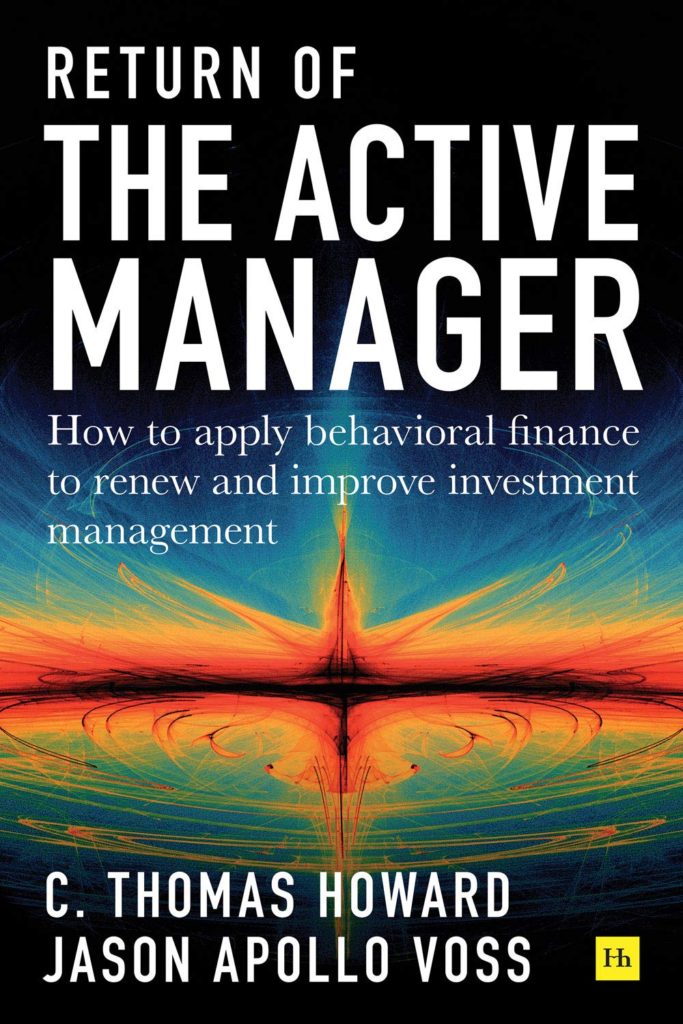Active portfolio management is dead, killed by the superior performance of cheaper stock index funds.
Or is it?

In Return if the Active Manager, C. Thomas Howard and Jason Apollo Voss make the case that active management may actually be on the verge of a major comeback.
As recently as 2009, active mutual funds enjoyed a market share of over 75%, with passive index funds making up less than 25%. In 2018, active and passive funds reached parity, with each taking about 50%. It’s safe to assume that, once the numbers are tallied, passive funds will overtake active funds in 2019. Howard and Voss eventually expect the split the stabilize at roughly 70% passive index funds and 30% actively managed funds.
It’s not hard to understand why. As Howard and Voss explain it, the fund industry is structured to force active managers into being closet indexers, which is a battle they can’t win. They can’t beat the index if, in the authors’ words, “active managers are being asked, not just to beat the index, but to do so with the same securities, the same industry weightings, no tracking error, no style drift, the same volatility, with lower expenses,” etc.
The authors make a compelling case that Morningstar and its style boxes are to blame. While Morningstar intended for their style boxes to describe and evaluate funds after the fact, instead they became a straightjacket of investment constraints before the fact.
Because of the need to fit within a Morningstar style box, managers get forced into a game they can never win. The only way to beat an index is to do something fundamentally different, which means “style drift” or “tracking error.”
As Howard and Voss explain it, the unintentional outcome was “the bland sameness in investment management strategies, leading to consistent underperformance of closet indexers…”
If the situation looks bleak for active management, the good news is that its destruction brings opportunities. As others, such as Mike Burry and Bill Ackman, have noted, indexing only works when there are active managers whose informed trading forces prices into a state of efficiency (or something close to it). If there are no more active managers, then passive investing stops working effectively.
As Howard and Voss explain, “As stocks are increasingly held by index funds, which simply respond to investor flows rather than fundamental company information, stocks become increasingly mispriced… The implication is that as investors flee closet indexers and move their money into low-cost index funds, stock picking opportunities improve.” Hence the return of the active manager.
This brings Howard and Voss to the core of their argument. They see the future of active management being one in which Morningstar style boxes are irrelevant, as are all performance metrics that depend on the CAPM or the Efficient Market Hypothesis. Instead, active managers will focus on exploiting the stock picking opportunities created by excessive indexing.
This behavioral finance approach takes it as given that market prices are driven mainly by emotional crowds, and that investors are not rational. By understanding this – and by managing your own emotions – you can take advantage of market anomalies.
In evaluating active managers, Howard and Voss offer a few suggestions. First, look for managers that are pursuing a “narrowly defined strategy with consistently and conviction.” You’re looking for a specialist, not a generalist. Secondly, look for smaller managers with less than $1 billion in any single strategy. And finally, look for low correlations. Howard and Voss suggest looking for funds with R-squared values (a common measure of the degree to which a fund tracks an index) of below 0.80.
As active managers specializing in behavioral finance, Howard and Voss clearly have an interest in investors following their advice here. But their analysis is solid, and investors would be wise to take it seriously.
My compliments to the authors.
